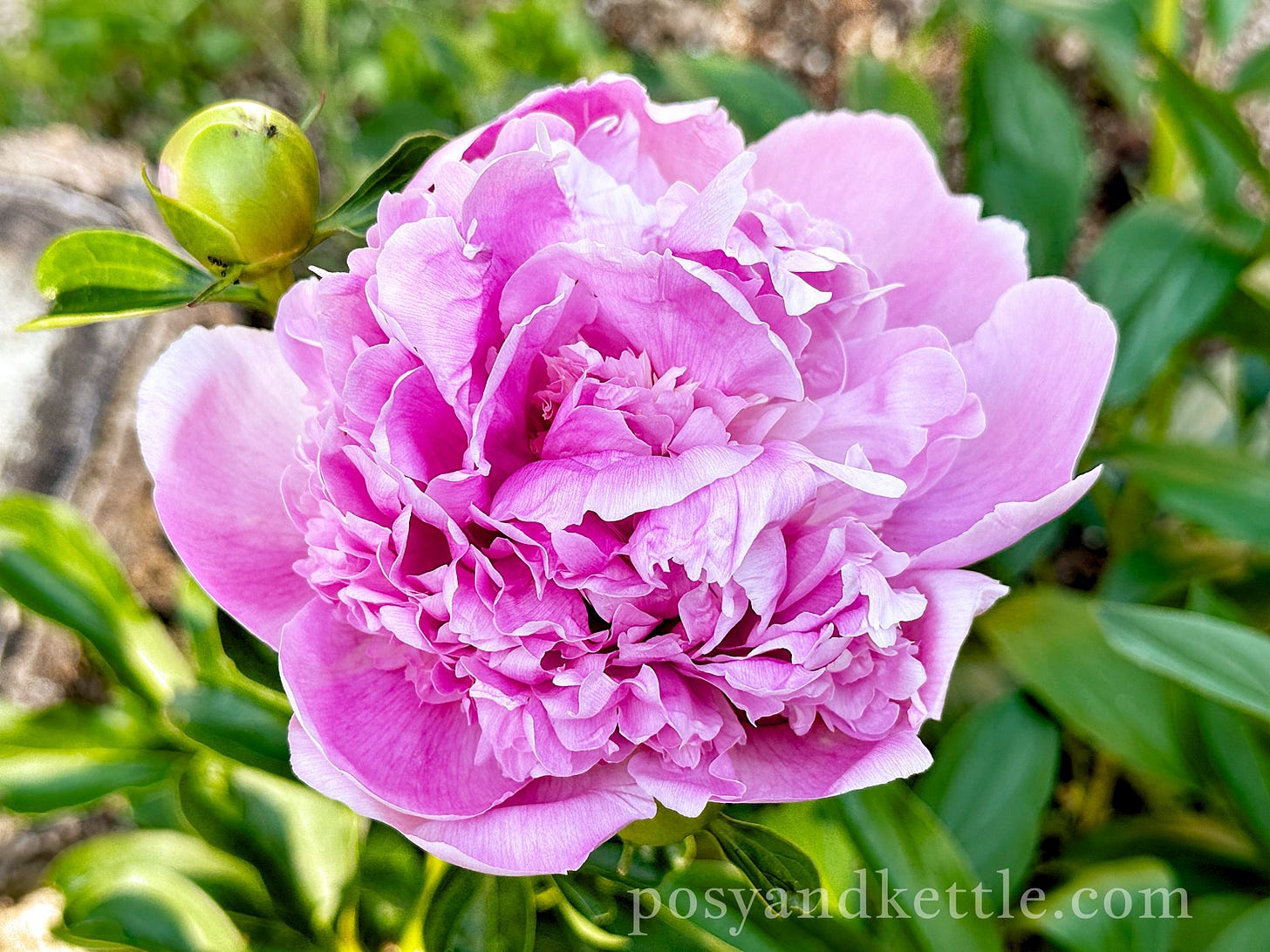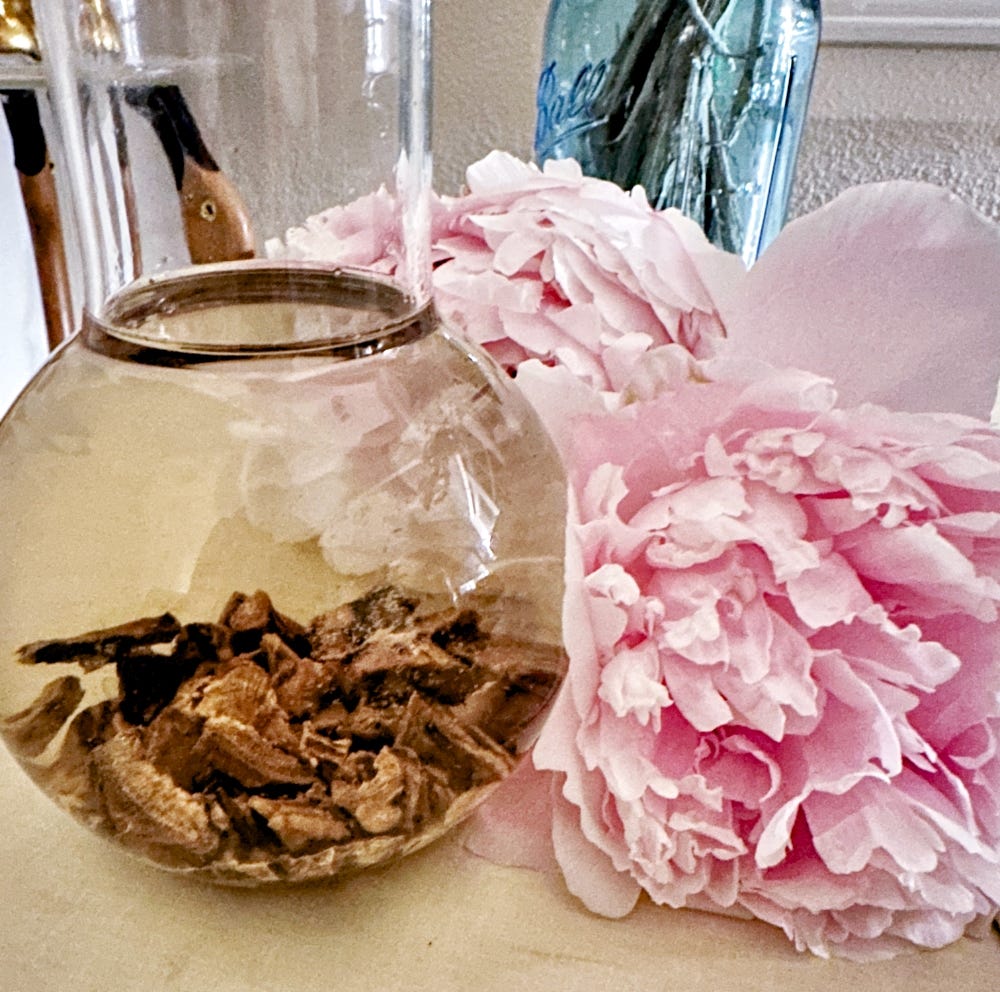The Amazing Anti-Inflammatory You Can Buy at Home Depot!
Did you ever think you'd see anti-inflammatory and Home Depot in the same sentence? It's not clickbait, it's real!
(Please note, the post is not intended to be medical advice, and you should always check with your doctor before introducing new herbal preparations into your health regime.)
Right now at Home Depot and probably other stores with gardening supplies is the time of year when all of the spring bulbs and perennial roots are put on sale as the summer solstice approaches in about four weeks. And it is at this time that you are going to want to stock up on one kind of root in particular: Herbaceous peony otherwise known as Paeonia lactiflora. But, in this instance you will be purchasing this root not for use right away, but for planting now and then harvesting for use in 2 - 3 years or more. Check the package to ensure that you are indeed purchasing the herbaceous peony, Paeonia lactiflora and not the bush peony. You must be in growing zones 8-3 to grow and harvest a good crop of this as it does need to have some cold winter temps to produce the lush medicinal root for use as an herbal anti-inflammatory.
Peony is not only my favorite flower, it’s also at the top of my list of favorite herbal anti-inflammatories. In my experience it works better than any other herbal anti-inflammatory I have tried (and I’ve tried a lot of different herbs for this). As someone with autoimmune disease, and the chronic inflammatory process taking place in my body even when I’m not an acute disease flare requiring medical attention, I have found that there are some plants that do a pretty good job at managing symptoms that can be treated with a home remedy. Peony is one I want to talk about today (but there are others that I grow in my garden and will be discussing here throughout the gardening season) because it’s not only very accessible for most people, but has a lot of scientific evidence for efficacy as an anti-inflammatory. So much so that the compound responsible for these effects, TGP or Total Glucosides of Peony in Chinese hospitals.
One of my favorite things about Peony is its safety profile. Again, you should always check with your doctor, but in the research I have gathered to discuss this plant with you, peony has an even better safety profile than turmeric (which can have effects on the liver when consumed in large quantities, and has very low bioavailability) and typically does not interfere with other medications. The biggest concern with peony is that it does contain phytoestrogens which may be good for some moderate menopausal symptom relief, but could also interfere with treatment for breast cancer patients who cannot use or tolerate anything with estrogenic properties.
Comparing turmeric and peony as effective herbal anti-inflammatories, turmeric would be a slice of an apple while peony is like an entire apple pie. Turmeric is more what I would describe as a comforting anti-inflammatory herb, effective in modest pains and strains when used judiciously like in traditional golden milk. Peony on the other hand packs a much bigger punch in terms of relief from the symptoms of chronic inflammation like fatigue and pain.
Peony root has been traditionally used in Chinese folk medicinal formulations for inflammatory conditions. Typically these formulations will include several herbs at once, but, peony by itself, brewed as a decoction, is also very effective. And as in the studies I have cited here, these studies have been done using peony as a singular source with the TGP or total glucosides of peony being of the greatest interest.
The worst part about peony root decoction is of course the flavor. It’s bitter and tastes pretty bad. It’s something I tolerate though because I like the effects so much that it’s worth gulping down a cup of the decoction and chasing it with some lemonade. Of course, who wouldn’t rather drink a tasty cup of fresh golden milk—if ONLY it were as effective as what I like to call “the terrible grace of God” my nickname for this horrendous tasting peony root decoction that is my go to when my symptoms have me flat on my back.
Peony flowers also contain some TGP, although not as much as the root, but the flower petals can be dried and used in a mix with green tea. They will add a slight bitterness, and have less medicinal effects than the root, but green tea also has its own very moderate anti-inflammatory effect so I think this is a nice blend too and the taste is tolerable.
If you look around on the internet you can find sliced and dried peony root packaged as “white peony root” (bai shao). This doesn’t necessarily refer at all to the color of the flower that those roots made, although some peony plants do make white flowers. What this refers to is the peony root that has had the outer bark removed. There is another kind of sliced dried peony root called “red peony” root, a subspecies of lactiflora (Chi Shao or Paeonia veitchii) which has a similar TGP profile. I’ve never used or grown this species so I don’t have any personal experience with it. It is herbaceous, but the flowers have a different appearance from lactiflora.
If you already have paeonia lactiflora growing in your garden, or in the garden of a friend, you are in luck because now all you need to do is wait until around Nov-Dec to dig up a big fat root to clean, slice, and dry for use making a decoction. But if you want to start growing your own, they are among the easiest perennials to cultivate. If you’d like to try it now, but don’t have access to fresh plants, you can purchase the organic sliced root from reliable vendors like Starwest Botanicals, which sells this product on Amazon. Please do not be alarmed when you see the product labeled as a product of China. Whole Chinese-grown herbs, when organic, are just as reliable as any other organic herb. The use of this herb originates in Chinese medicine so actually some of the best sliced, dried roots are going to be of Chinese origin. Just like the best teas in the world come from China, so the utmost care and attention are also given to the organic herbs that comprise the Chinese herbal medicine pharmacopeia.
As always, the best herbs will always come from your home garden, and this is exactly why you should be growing Peony if you can. There is nothing as good as fresh herbs you have cultivated in your own garden!
Making a decoction of this herb is the BEST way to experience the most benefits from it. Decoction is different from a tisane as it involves boiling the herb for an extended time (30 minutes) and then straining the liquid and drinking it. The best way to make a decoction is using a lab-safe glass beaker that can be used on your stove top to boil the roots as I do. Always try to avoid using metal pans for making herbal decoction. Put about 1/4 - 1/3 cup of dried peony root into the beaker, fill with water, and boil. Strain this and then you can fill it a second and third time until all of the compounds have been thoroughly released from the roots. I like to let mine cool and drink it very fast with a lemonade chaser. This is not a “tea” you will want to sip, as I mentioned, the taste of “the terrible grace” is pretty horrific. But, it’s something you'll grow accustomed to, and even look forward to, if you find this herbal decoction to be as helpful as I have found it to be.




